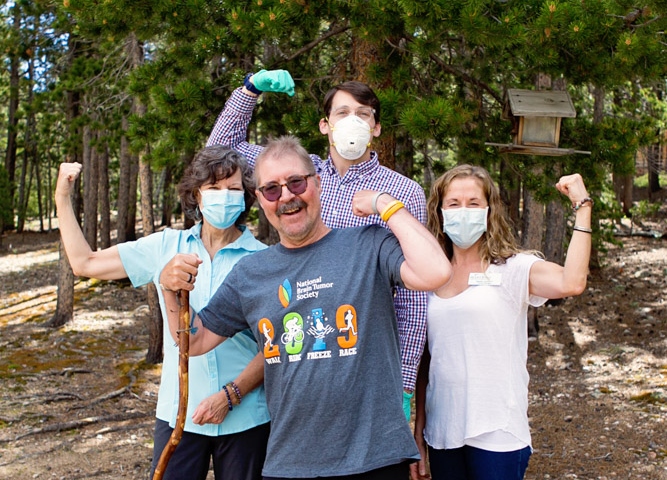Now in its 36th year, ColoradoBiz magazine’s Top Company Awards program recognizes businesses and organizations based in Colorado or with a significant presence in the state that are leading the way in their fields, as demonstrated by financial performance, notable company achievements and community engagement.
To be considered, Top Company entrants submitted applications throughout the year online at ColoradoBiz.com. From those entries, which numbered in the hundreds, the magazine’s editorial board narrowed the field to three finalists (in most cases) in each industry category. A judging panel made up of area business leaders and ColoradoBiz staff then met to compare notes on the finalists and decide winners in 14 industries plus the Startup category, for companies in business four years or less.
Congratulations are in order not only to the 41 winners and finalists profiled on the following pages, but to all the companies that took the time to tell us about their achievements and obstacles surmounted over the past year that make them worthy of Top Company consideration.
READ: Fall 2023 Issue — Top Company Awards, Inside the CHIPS and SCIENCE Act, and More
WINNER
Good Day Pharmacy
Loveland, CO
Website: www.gooddaypharmacy.com
David Lamb and his pharmacist wife, Nancy, bought their first drug store in Loveland in 1985.
Good Day Pharmacy has grown across Northern Colorado from there, and now operates 12 pharmacies in Loveland as well as Fort Collins, Greeley, Yuma, Eaton and Wellington. Across its entire footprint, the company has 133 employees.
“Though much of our concerted effort remains behind the scenes, it manifests in our ability to improve patient health, simplify medication management for the patient and cultivate strong community bonds,” says President and COO Joseph Poling, Pharm.D. “Our unique blend of cooperative teamwork and innovative service delivery positions us as a formidable force in the health-care community.”
The steady expansion continued with the acquisition of Prospect Apothecary, a sterile compounding facility in Longmont, in April 2023. Poling says there are plans for additional deals in the future.
Good Day leaders and employees staff the “Ask a Pharmacist” booth at the 9HealthFair and raise money for numerous health-care nonprofits. “By collaborating with various organizations and participating in community events, we aim to create a better and healthier environment for everyone,” Poling says.
The numbers back this up: In 2022 alone, Good Day administered 14,827 vaccinations, collaborating with local businesses, senior retirement communities and facilities, and jails and correction centers to organize vaccination clinics.
Poling says staffing is one of the company’s biggest challenges, and Good Day has fostered an inclusive culture with clear career paths for its employees. “We also encourage restful time off, as we understand the necessity of a well-rested team to maintain our high standards of service,” Poling says. “Our prudent staffing practices ensure our team isn’t overburdened, thereby preventing medication errors and maintaining the level of service that sets us apart.”
The strategy continues to pay off, as annual revenue grew by more than 20 percent in 2022. “We’re fortunate to have established a loyal customer base in the communities we serve, and we don’t take that for granted,” Poling says.
FINALISTS
2nd Home Community
Aurora, CO
Website: www.2ndhomecommunity.com
2nd Home Community is “an adult day care center like no other” for the aging population in Colorado. The company’s facilities aim for a welcoming atmosphere and offer exercise and yoga sessions, music, dancing, facials and pedicures. The staff regularly takes clients on field trips for picnics, and even chaperoned a small group to Mexico for a few days.
CEO Haneen Omar, along with 2nd Home Community, was recognized in the United States Congressional record in 2021 for providing high-quality care and helping to demarginalize the community the company serves.
2nd Home has grown from 60 employees in 2019 to 300 employees in 2022 as revenue more than tripled. The company now encompasses four locations (including 1st Choice Life Skills Academy to assist clients with intellectual and developmental disabilities) in Aurora, and there are plans for more.
Keeping up with demand has required an aggressive recruitment and retention strategy, which the company has tackled by increasing pay rates and benefits, providing flexible paid time off, and adding an employee referral incentive program.
Leiters Health
Englewood,
Website: www.leiters.com
Leiters Health is an FDA-registered 503B outsourcing provider of sterile compounded pharmaceuticals. The company supplies IV bags, vials, syringes and other products to customers like physician offices, hospitals and surgery centers. The business started as a family-owned pharmacy in California in 1926 but closed its brick-and-mortar location in 2015 to focus on outsourcing.
Leiters came to Colorado after the ownership group acquired another compounding pharmacy in Englewood. The company moved its headquarters to Colorado in 2016 and subsequently launched a 60,000-square-foot facility to handle the large-batch volumes the market needs.
Since operations commenced there, the company has had its share of challenges — and opportunities for growth. “When a large competitor exited the market unexpectedly, Leiters stepped in and increased production volumes significantly to provide products for patients,” says President and CEO Joseph Cosgrove.
With “10 of the most well-known health systems” in the country as strategic investors in Leiters, annual revenue jumped by more than 50 percent in 2022. “Marketing and product innovation has been a catapult for the company’s differentiation strategy,” Cosgrove says, citing a target to quadruple the business by 2028.




